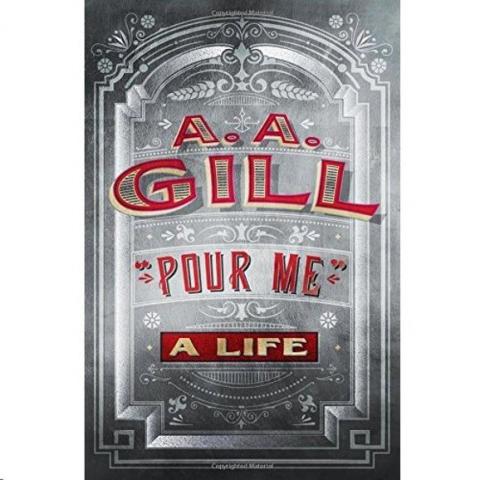Circling the ‘Small Death’ of Alcoholism in A.A. Gill’s ‘Pour Me, a Life’

Pour Me, a Life
By A.A. Gill
Blue Rider Press,
On page two of Pour Me, A Life, a memoir ostensibly about the author’s recovery from near-crippling alcoholism, A.A. Gill describes looking out the window of a treatment center located in the west of England. This view includes a “sea of green lawn,” at which point Gill pauses to reflect on the idea of lawns in general:
“I get lawns confused. Lawns just lie there with a permanent ennui, a silky languor. I wonder what the rest of nature makes of a lawn. Arrogant, snobbish, entitled, needy, effortfully polite, sober. Rebuke of the wild.”
Depending on the kind of reader you are, this brief, witty digression can suggest (a) a promising romp through one individual’s eclectic consciousness or (b) a frustrating example of a talented writer who can’t stay focused on key points for very long. I started out in the (a) camp and over time reluctantly ended up in (b).
In England, A.A. Gill has achieved a fair degree of notoriety as an outspoken restaurant and television critic. This notoriety apparently stems in part from his caustic and outspoken point of view, some of which bleeds into his memoir about life as a disappointed art student, habitué of down-at-the-heel environments like Soho at its seediest best in the late 1970s and as a far-from-ideal husband and lover. All of this is rendered with impressive honesty and in vivid language.
But Pour Me, a Life is marketed as a story of the author’s “near-fatal alcoholism”—which, though done many times before by other authors, is nonetheless a compelling rationale to pick up and read it. Again, things start promisingly, with Gill making a clear-eyed distinction between “ordinary” drinking and full-blown alcoholism:
“The bliss of drink is that it’s a small death. The difference between you and us, you civilian amateur hobbyist drinkers and us professional, committed indentured alcoholics, is that you drink for the lightness, we drink for the darkness. You want to feel good, we want to stop feeling so bad. All addictions become not about nirvana, but about maintenance. Not reaching for the stars but fixing the roof.”
Undeniably, there’s a lurid attraction in reading about people who go far beyond the norm, be it with drink, sex addiction, heroin, etc. In the case of Pour Me, A Life, however, readers don’t get a full sense of the depths to which Gill sank as a young man (he’s been sober for 30 years), because he simply doesn’t remember many of the particulars. Memories are spotty, the line is blurred between truth and falsehood (a quality expertly honed by alcoholics when dealing with the disapproving “sober” world) and the all-too-human gift for self-deception gets in the way of a straightforward account of events.

As a result, much of Gill’s book flits off into loosely structured digressions concerning the art world in England, the strange disappearance of his brother Nick, the “alchemy of cooking,” and—for surprising long stretches—the author’s struggles with dyslexia. These tangents are occasionally engaging but the cumulative effect is one of detachment, as we wait for the author to circle back to the more compelling subject matter of bottom-of-the-barrel dysfunction and painfully successful recovery.
To his credit, Gill acknowledges his magpie approach to knowledge and insights:
“Well, I know lots of things. Lots and lots and lots and lots and lots of things. Lots of things about lots of things about bigger things—but they’re not joined-up things.”
Come to Pour Me, A Life with the understanding that you’ll be welcomed into a “bowerbird’s collection of shiny gewgaws” and you’ll be rewarded with a quirky, often very funny reading experience. Don’t come seeking a “faith-infused pulpit tale of redemption.” That’s not what moved A.A. Gill to write this book.
Author Bio:
Lee Polevoi is the chief book critic for Highbrow Magazine.
For Highbrow Magazine






























































































































































































































































































































